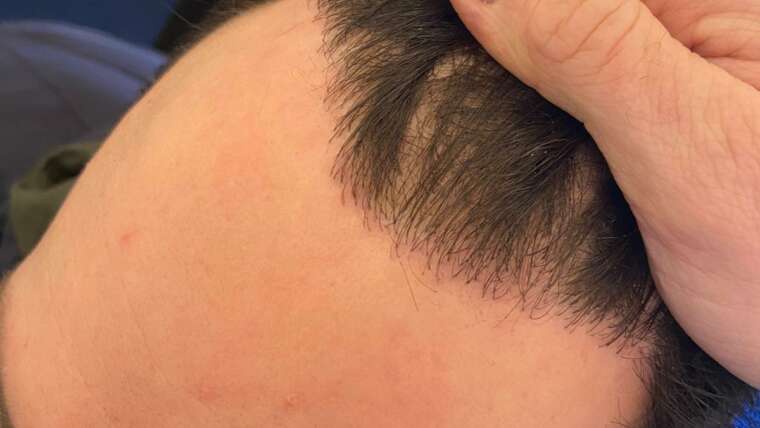Surgical restoration of androgenetic alopecia is performed under local anesthesia and lasts about 4 to 7 hours depending on the hair loss grade and the patient’s needs. The procedure is divided into two phases. The first is about going among the original hair at the occipital part of the scalp and taking/extracting skin micrografts containing hair follicles. This process is done by using punches and surgical experience helps to reduce the degree of surrounding hair damage so that to preserve the remaining hair intact. The second phase is about implanting the grafts in the area of interest, without processing them in any way or making any kind of pre placement holes or insertions. This process is done by using implanters.
The size of the tools used both for the extraction of the hair follicles (punches) and their implantation (implanters), is determined by the hair density in the occipital region, the thickness of the hair shaft, the anatomy of the hair follicles as well as the type of restoration.
With this technique hair follicles can be implanted not only in a bald area but also in an area of thinning hair. In this last case specific medical rules should be followed in order to implant safely in-between the original hair and prevent its premature shedding (shock loss).
The greater the patient’s needs or expectations regarding the number of transplanted hair, the greater the need to trim the hair very short at the occipital part of the scalp, if not at the whole of it, in order to proceed with the extraction. Unshaven surgery is possible but with a lower expected daily number of hairs transplanted.
Postoperative medication includes cortisone when needed to prevent possible swelling, gastro protection and antibiotics. Postoperative follow-up involves clinical examination to assess skin healing and hair growth.
Other Applications of Hair Transplantation
Hair transplantation can be applied for restoring scalp hair thinning due to hair styling (traction alopecia), cases of post-traumatic or postoperative scalp alopecia and for restoring other natural hairy areas of the face and body, such as the beard, mustache, sideburns and chest area in men and the pubic area in women. Medical rules concerning the placement of the transplanted hair are followed in order to achieve a natural result taking under serious consideration the patient’s aesthetics too.
New Hair Growth
Hair transplant procedure is not just a “space-conquering process” of transferring hair from one place to another. It is a surgical restoration that involves the so-called surgical trauma. The outcome, which includes the final new hair growth rate as well as the hair’s direction and emerging angle, depends on both the least traumatic technique possible and the patient’s general and local scalp tissue health. Although a medical history is taken and, if required, some preoperative examinations are performed, however, unknown histopathological factors as well as possible postoperative events or complications may affect negatively the final new hair growth.
The new hair growth begins to be assessed on the 4th month postoperatively but is completed 10-12 months after the operation. The direct surgical/traumatic stress of the transplanted follicular cells leads to a decrease in their metabolic rate and therefore to a loss of their hair. The new hair will present a few months later, when the cellular metabolic rate is restored. Hair growth is therefore a gradual process that takes time. However, it also requires the biochemical support of the recipient alopecia skin with conservative methods such as local application of minoxidil or mesotherapy treatment. The need for a therapeutical support is determined by the type of hair transplantation, the patient’s age, and any possible pre-operative health problems.



